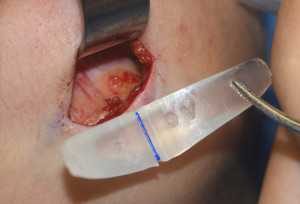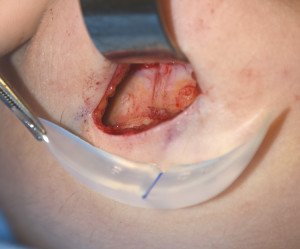The use of a chin implant for an increase in lower facial projection is often combined with other procedures (e.g., rhinoplasty) as well as done as an isolated chin augmentation. It has a long history of use in aesthetic facial surgery dating back over fifty years and nearly every available biomaterial has been tried as some form of a chin implant. But the use of silicone chin implants today constitutes the majority of chin augmentation devices used.
One phenomenon of placing a silicone chin implant (it also occurs with other biomaterials as well) is that of ‘chin implant erosion’. This is an erroneous term that implies that a chin implant is actively eating into or destroying the chin bone underneath it. (aka an active inflammatory process occurring as a a result of a bone reaction in response to a leaking of silicone molecules from the implant) That perception and propagated term is far from what actually occurs.


There are very rare cases where chin implant settling has placed the mandibular incisor tooth roots at risk or has caused some dental sensitivity. This is a direct result of a chin implant being placed far too high over the much thinner cortical bone near the tooth roots. As a result, passive implant settling may occur deeper into the bone and appear very close radiographically to the tooth roots. This is the direct result of an incorrect chin implant placement.
It is time to eliminate the term ‘chin implant erosion’ due to its biologic inaccuracy and replace it with a term that correctly identifies it with the passive bony remodeling process that it is. The better descriptor would be ‘chin implant imprinting’.
Dr. Barry Eppley
Indianapolis, Indiana


